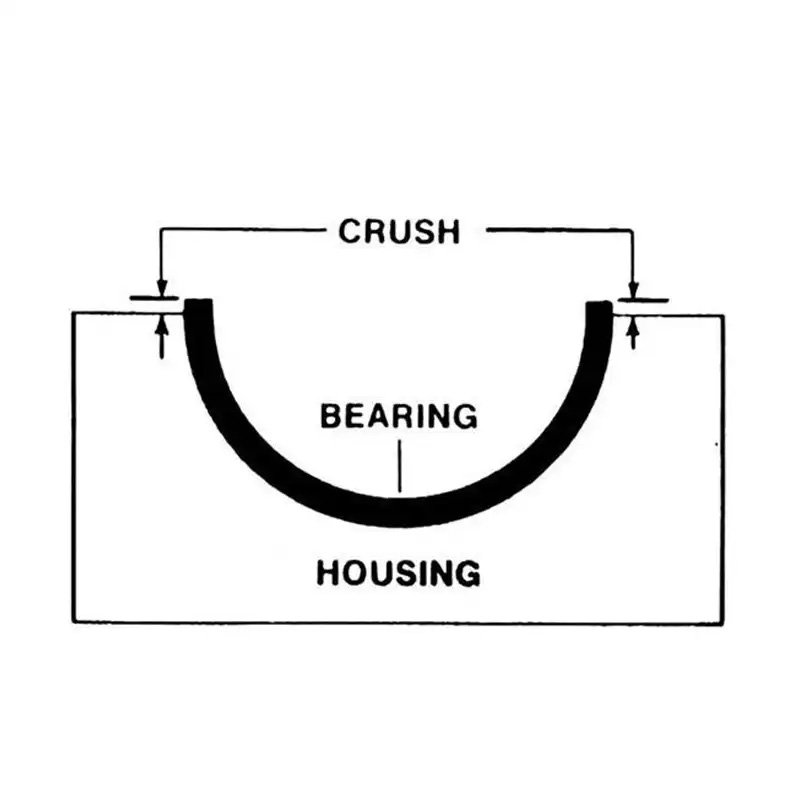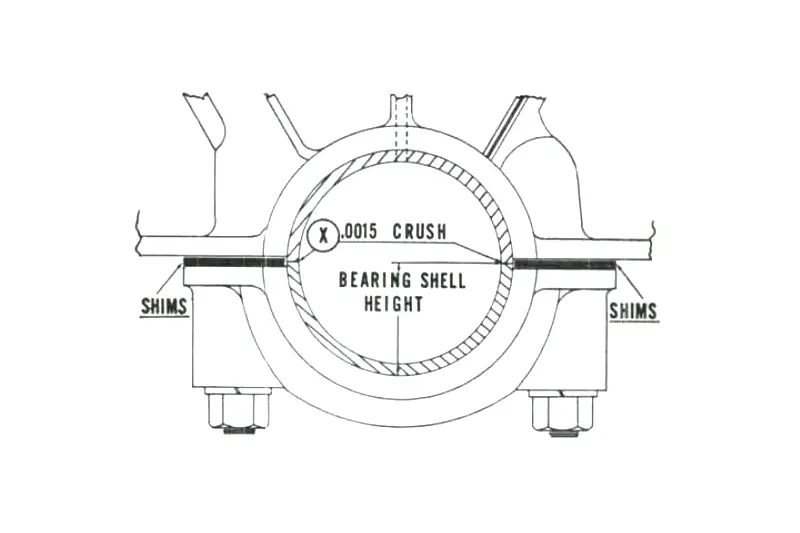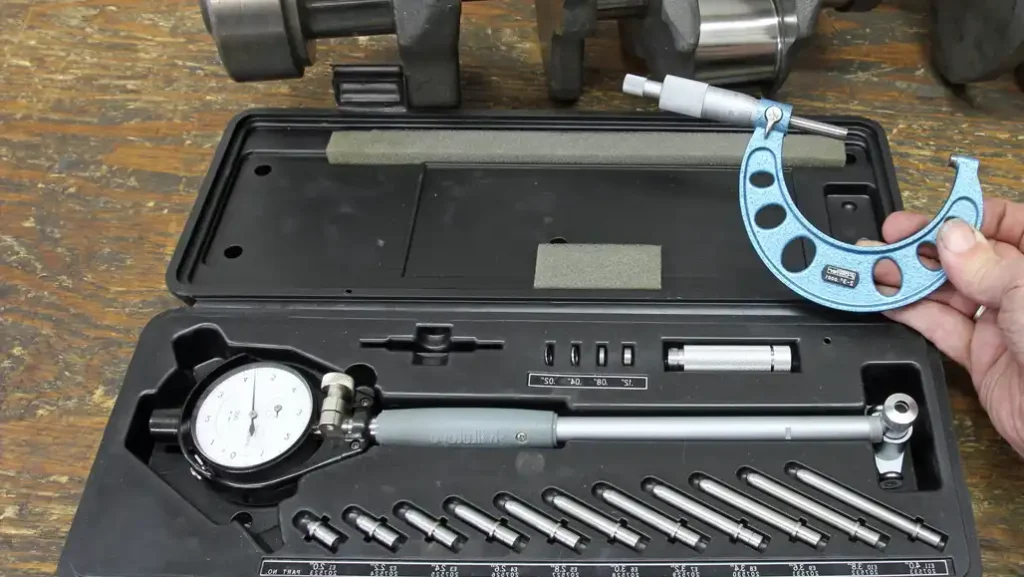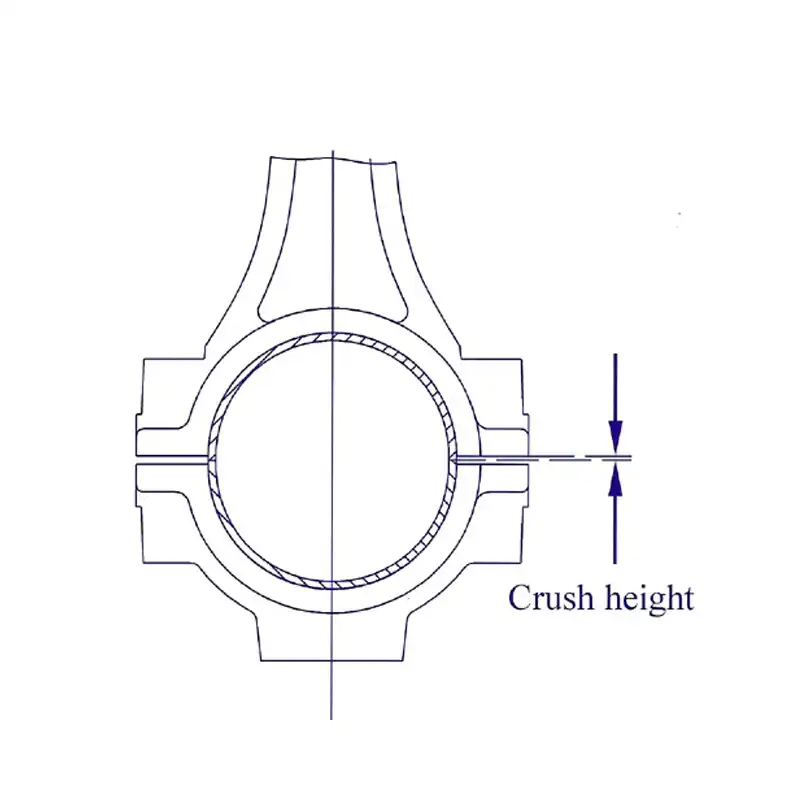Bearing crush measurement is a critical process in engine maintenance, ensuring the proper functioning and longevity of an engine. Here’s a step-by-step guide on how to accurately measure bearing crush:
What Is Bearing Crush

Before diving into the measurement process, it’s essential to grasp the concept of bearing crush. Bearing crush refers to the intentional deformation of a bearing when it is installed into its housing.
This deformation ensures a secure fit, preventing unwanted movement and maintaining the integrity of the entire bearing system.
Crush Height of Engine Bearings

It seems like there might be a slight confusion in your terminology. The term “Crush Height” is more commonly associated with piston rings rather than engine bearings.
However, if you are referring to the clearance or crush height in the context of engine bearings, I’ll explain both.
Piston Rings Crush Height:
Piston rings have a certain “crush height,” which refers to the difference in height between the cylinder bore and the uncompressed height of the piston ring when it is installed in the engine. The purpose of this crush height is to create a radial pressure against the cylinder walls, ensuring proper sealing between the piston and the cylinder. This pressure helps in preventing combustion gases from leaking into the crankcase and also assists in heat transfer.
Engine Bearing Clearance:
Engine bearings are crucial components that support the rotating motion of the crankshaft within the engine block. The clearance or crush height in the context of bearings usually refers to the space between the bearing surface and the crankshaft journal when the bearing is installed. This clearance is essential for proper lubrication and to accommodate thermal expansion.
The clearance, often referred to as the “bearing clearance” or “oil clearance,” allows for the formation of an oil film between the bearing and the crankshaft, preventing direct metal-to-metal contact and reducing friction. It also compensates for any misalignments or deformations in the engine components during operation.
Tools for Bearing Crush Measurement

Measuring bearing crush is a critical aspect of engine assembly to ensure proper clearances and performance. There are various tools available for measuring bearing crush, and they are commonly used in engine rebuilding and manufacturing processes. Here are some tools typically employed for bearing crush measurement:
Bearing Crush Gauge:
This is a specialized tool designed for measuring bearing crush. It typically consists of a calibrated dial indicator or a set of feeler gauges that can be inserted between the bearing and the housing. As the tool is inserted, it measures the displacement or clearance, providing a reading that corresponds to the bearing crush.
Dial Bore Gauge:
A dial bore gauge is a versatile tool used for measuring the internal diameter of a bore. It can be used to measure the bore diameter with and without the bearing installed. By comparing these measurements, the bearing crush can be calculated.
Micrometer:
A micrometer can be used to measure the thickness of the bearing shell. By measuring the thickness of the bearing before and after installation, the difference can be used to determine the bearing crush.
Calipers:
Vernier or digital calipers can be used to measure the outside diameter of the bearing. This measurement, along with the housing bore diameter, can be used to calculate the bearing crush.
Plastigage:
Plastigage is a thin, thread-like material that is placed between the bearing and the housing. After assembly, the material is flattened, and its width is measured using a scale provided with the plastigage. This method provides a quick and straightforward indication of the bearing clearance.
Feeler Gauges:
Standard feeler gauges can be used to measure the gap between the bearing and the housing. This method is less precise than some specialized tools but can still provide a reasonable estimate of the crush.
When using any of these tools, it’s essential to follow the manufacturer’s instructions and recommendations for accurate measurements. Proper bearing crush is crucial for maintaining the right clearances, ensuring proper lubrication, and preventing issues such as excessive wear and engine damage.
To measure bearing crush accurately, you’ll need the right tools. Common tools for this task include micrometers, gauge blocks, and a clean, controlled environment to ensure precise measurements.
Conclusion
If you want to know more detailed info about bearing crush measurement, and please feel free to contact us at any time.

